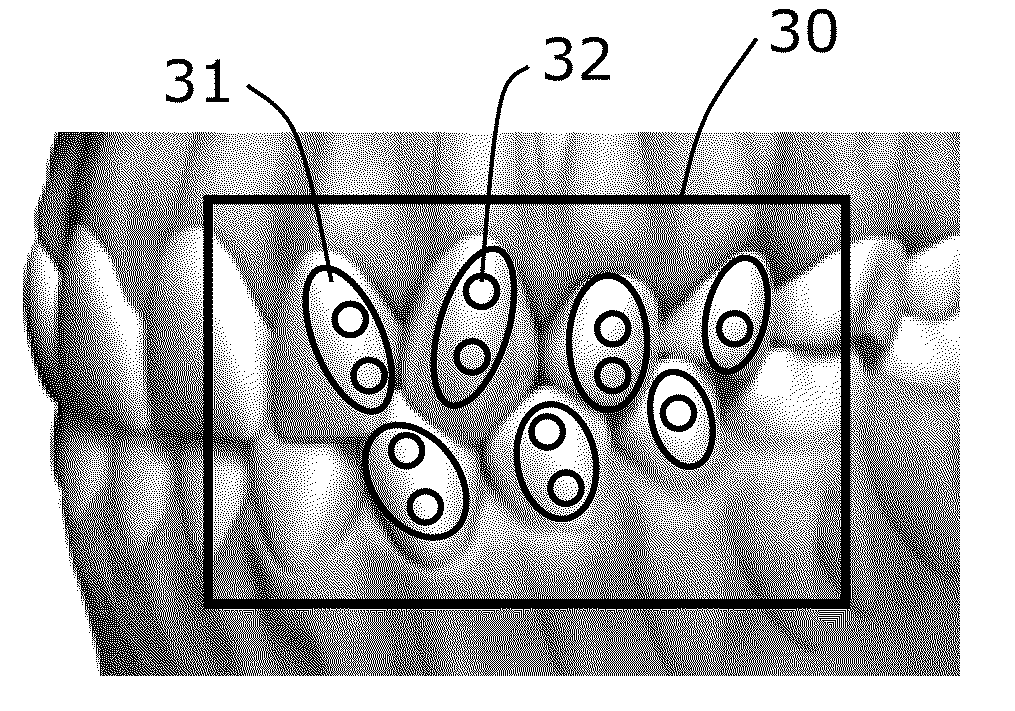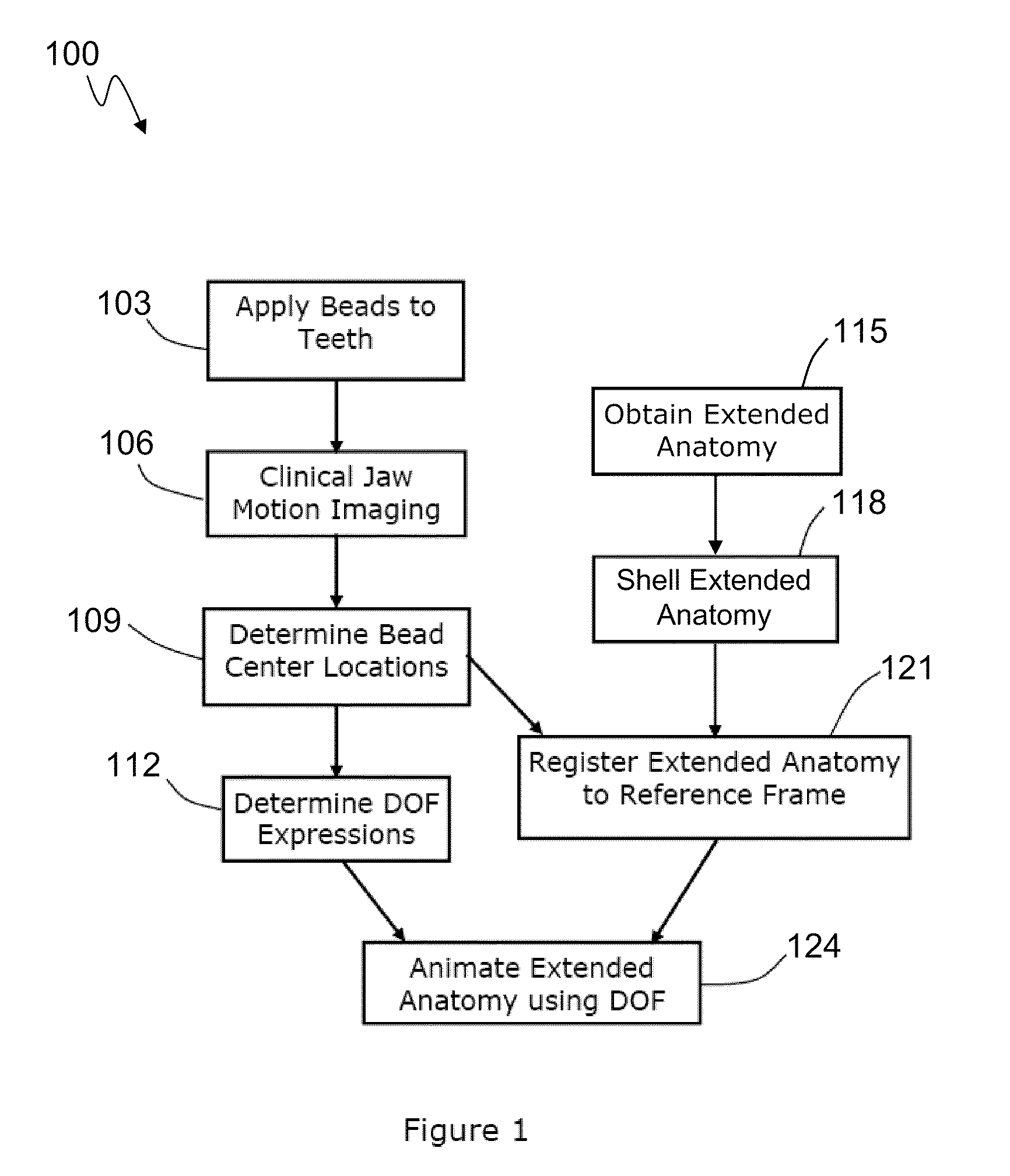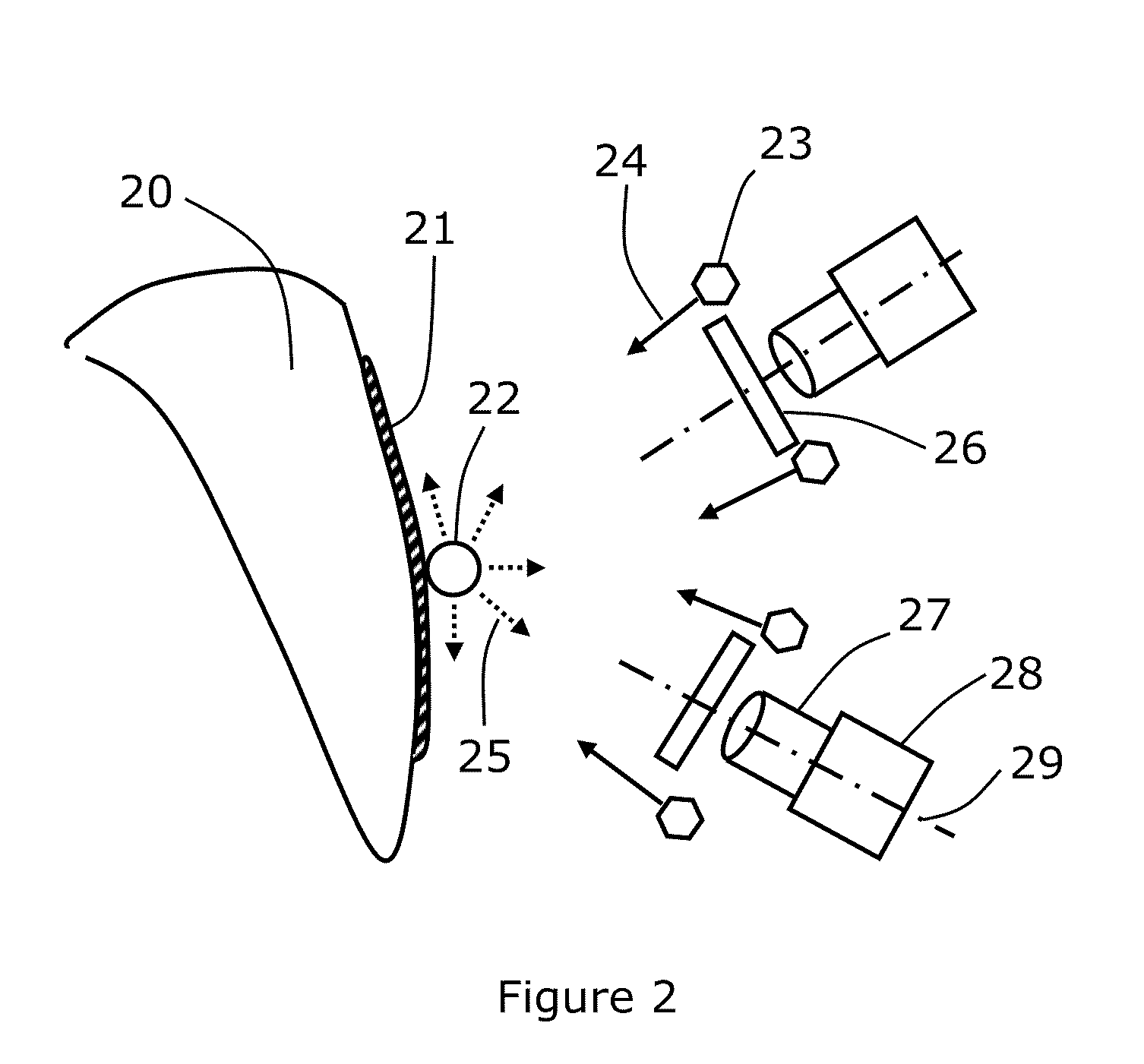Methods And Composition For Tracking Jaw Motion
a technology of jaw motion and composition, applied in the field of model jaw motion, can solve the problems of inherently disrupting an individual's natural jaw movement, difficult to register data obtained from frame-based systems, and inability to complete three-dimensional (“3d”) models of the dentition
- Summary
- Abstract
- Description
- Claims
- Application Information
AI Technical Summary
Benefits of technology
Problems solved by technology
Method used
Image
Examples
Embodiment Construction
s
[0109]1. Enhanced Crown Design
[0110]For enhanced crown design, the extended oral anatomy refers to the 3D surface anatomy associated with the preparation for the new tooth, its adjacent teeth, and the antagonist teeth in the opposing arch. Animating the occlusal surface of antagonist teeth provides the means to generate a dynamic surface which represents the locus of antagonist tooth positions. Designing crowns, using computer aided design, against this surface reduces the interferences when the crown is fitted in the mouth.
[0111]2. Custom Condylar Inserts
[0112]The range of motion of natural jaw motions may be captured and converted to a set of left and right-side condylar eminence geometries. This locus of positions may be used to fabricate a patient-specific insert to be placed in a dental articulator to allow the device to duplicate the natural jaw motions of an individual.
[0113]Although the present invention has been described with respect to one or more particular embodiments,...
PUM
 Login to View More
Login to View More Abstract
Description
Claims
Application Information
 Login to View More
Login to View More - R&D
- Intellectual Property
- Life Sciences
- Materials
- Tech Scout
- Unparalleled Data Quality
- Higher Quality Content
- 60% Fewer Hallucinations
Browse by: Latest US Patents, China's latest patents, Technical Efficacy Thesaurus, Application Domain, Technology Topic, Popular Technical Reports.
© 2025 PatSnap. All rights reserved.Legal|Privacy policy|Modern Slavery Act Transparency Statement|Sitemap|About US| Contact US: help@patsnap.com



